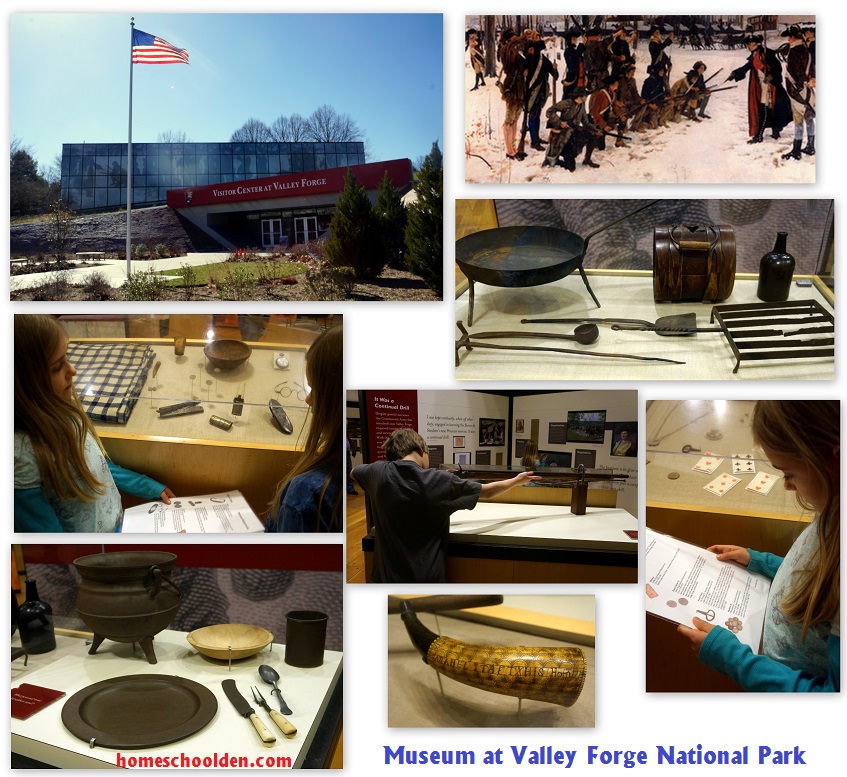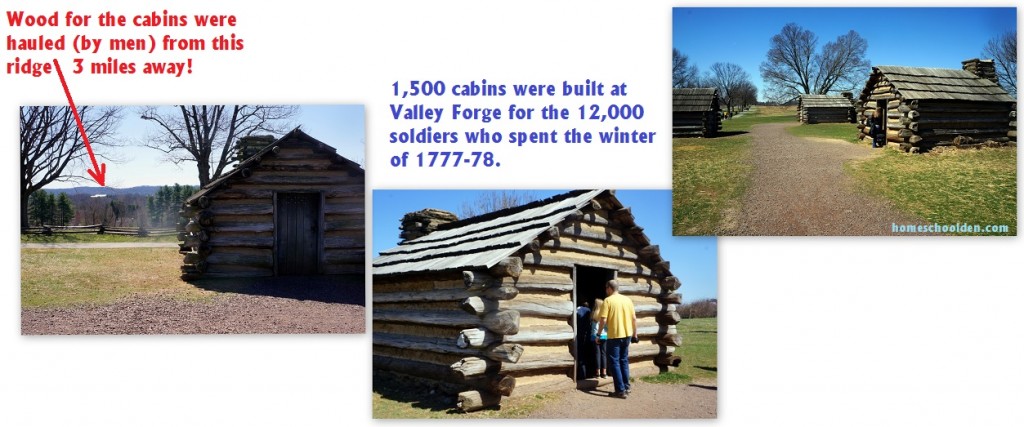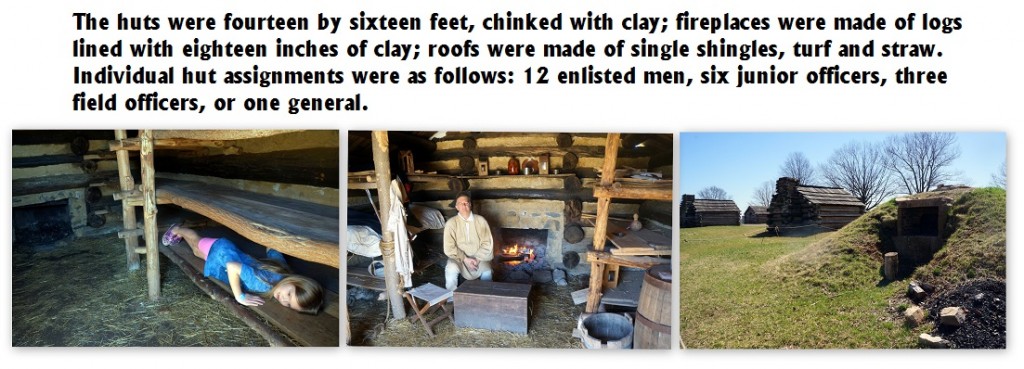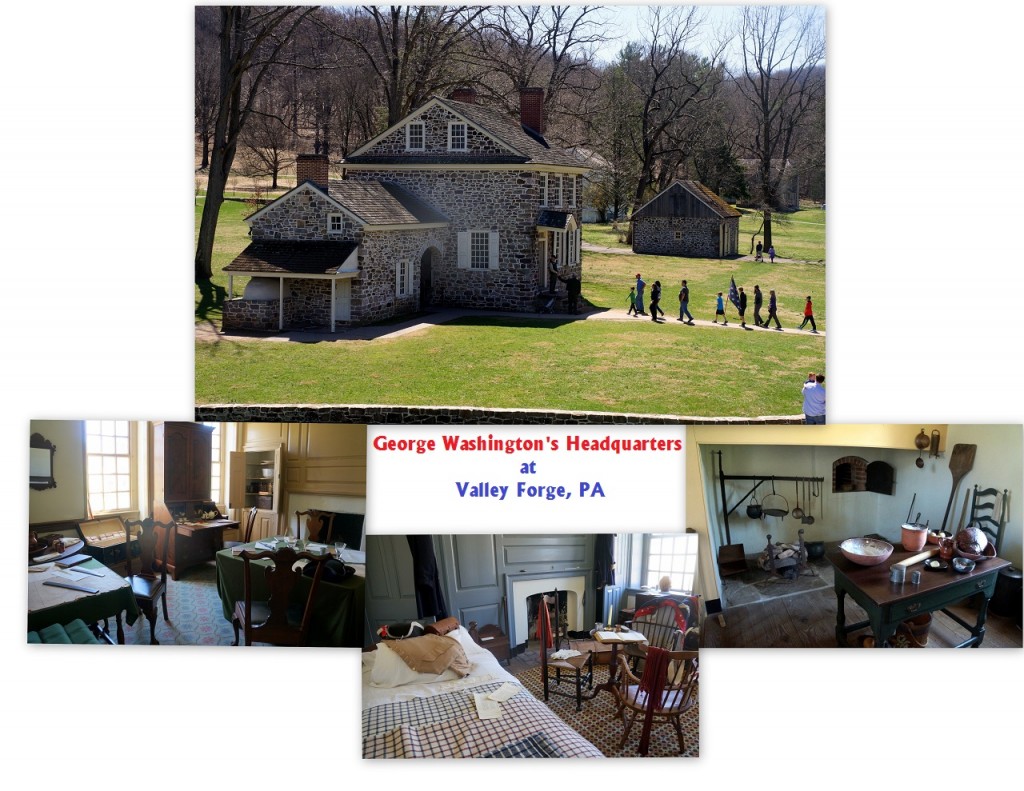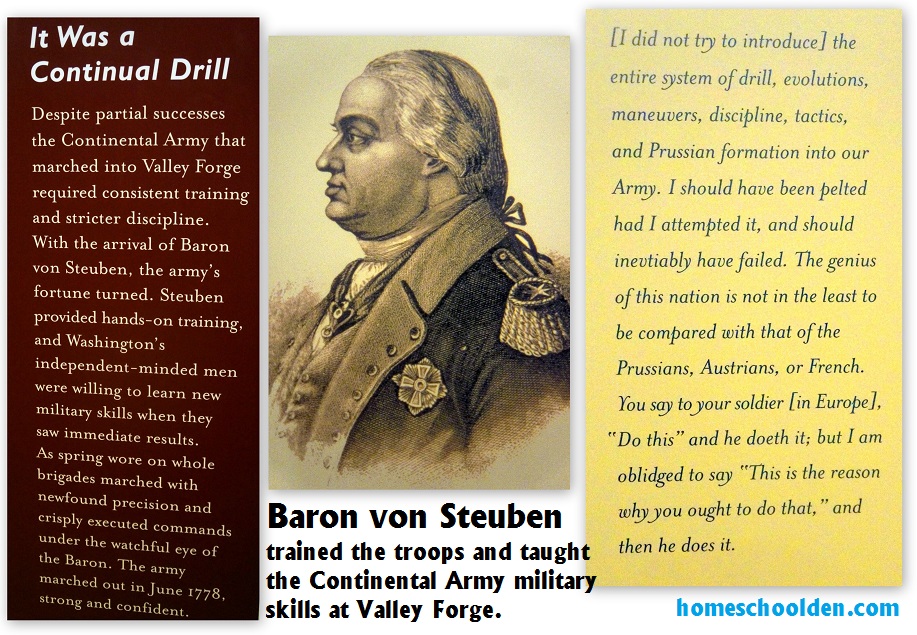Valley Forge National Park – Great for Families!
Valley Forge National Park is a fabulous family park, not only because of the historic significance which I’ll go into below, but because of the miles of trails. Those trails are perfect for biking and walking. They have a fantastic guided trolley tour of the park as well. We had a fantastic time there this past weekend and learned SO much!!
Our first stop, of course was the Visitor Center at Valley Forge. We watched their 20 minute film and then spend time looking through the museum. The kids liked the laminated sheets that described the artifacts. We all took time quizzing each other and guessing which artifact might be the “housewife” (a small sewing kit) or the tool used to amputate limbs. (Ack!)
We decided to do the 90-minute trolley tour through the park. It was *fabulous*!! (They also have an option where you can do a self-guided tour with your own vehicle or buy a CD that will explain things as you do the tour.) I’m really happy we did it with a park ranger/guide. He was engaging and the kids were riveted by his stories!
So what happened at Valley Forge?
Here’s the setting: It was December 1777. The war wasn’t going so well for the colonial army. The British occupied Philadelphia and the colonial army was ill-supplied with some soldiers without shoes or proper clothing. They settled in at Valley Forge for the winter.
The colonial army had been pushed out of New York in 1776 and had retreated into Pennsylvania. On Christmas 1776, Washington’s army snuck across the Delaware River and had two small victories at Princeton and Trenton, New Jersey. [Our family visited Washington Crossing’s State Park four or five months ago.] But after that, things didn’t go well for the army. The army suffered defeats at Brandywine and the city of Philadelphia had fallen to the British.
Washington wanted to keep the colonial army reasonably near Philadelphia that winter. The army moved to a location outside of Philadelphia called Valley Forge and started to set up camp. They arrived in the area with about 12,000 soldiers (plus, some their wives, etc.).
They got busy building small cabins. Because they encamped on farmland, they had to drag wood from the ridge about 3 miles away. They also dug 3-foot trenches and other fortifications for several miles around the camp. Within a fairly short period of time they had constructed 1,500 cabins and had created the 4th largest city in the colonies!
The cabins were reasonably comfortable (though if you look at the photo below, you can see there wasn’t much room for ED to squeeze into the bunk!). They had trouble procuring the food and supplies necessary for an army of that size, but each soldier was given a life of bread each day (bottom left picture shows the outdoor oven). The museum had pictures of some of the tools, supplies, and other items soldiers and others would have used during their six-month stay at Valley Forge.
Meanwhile, George Washington (who celebrated his 46th birthday while at Valley Forge) made his headquarters at one of local houses. We were able to go in the building (one of two original structures). The rooms had replicas so we could see what life would have been like.
Disease and sickness was a problem with many succumbing to influenza, small pox, dysentery, typhoid, typhus and pneumonia. After six months, about 1,900 people had died from illness. Only about 6,000 soldiers remained. Yet, the fact remained that the army did not disband; soldiers did remain with Washington. Washington always acknowledged that the perseverance gained by the soldiers at Valley Forge was what made the Continental Army bind together even stronger and eventually win the war.
One of the things that went well for the colonial army was the training they received from Baron von Steuben. When he first arrived Washington gave him three days to give his suggestions on how to improve his army. After three days, he reported back to Washington and said that his army would lose because his army was unable to “dance” (ie march). In other words, the army couldn’t work together and be effective as a fighting unit. Steuben was hired to train the colonial soldiers and helped them become an effective fighting force.
Valley Forge National Park is definitely worth a visit. The kids really loved it! We watched the 20-minute video and toured through the museum area before taking the 90-minute trolley tour. It was outstanding and well worth the price… and as you can tell, we came away having learned a lot! That’s what it’s all about!
You might be interested in this post about our visit to Washington Crossing’s State Park (in Pennsylvania) and Yorktown (in Virginia).
See you again soon here or over at our Homeschool Den Facebook Page!
